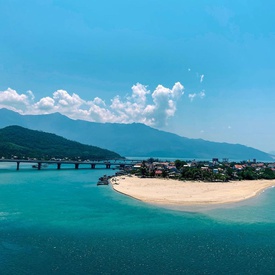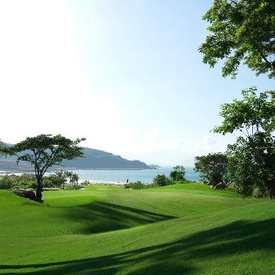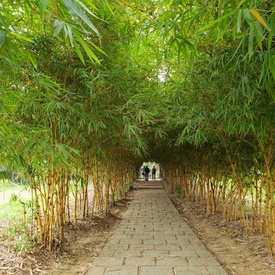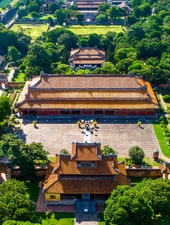Hoi An
Colorful Temples, Boutique Shops, Riverside Resorts, Tranquil Old Port - Hoi An has it all
A once-bustling trading port, Hoi An is now a rustic and charming cultural hub for visitors. The city seems to be frozen in time, retaining much of its traditional heritage from its golden days. This place is a clear intersection of Eastern and Western cultures, reflected through its cuisine, architecture, and local traditions, showcasing a blend of Vietnamese, Chinese, Japanese, and European influences.
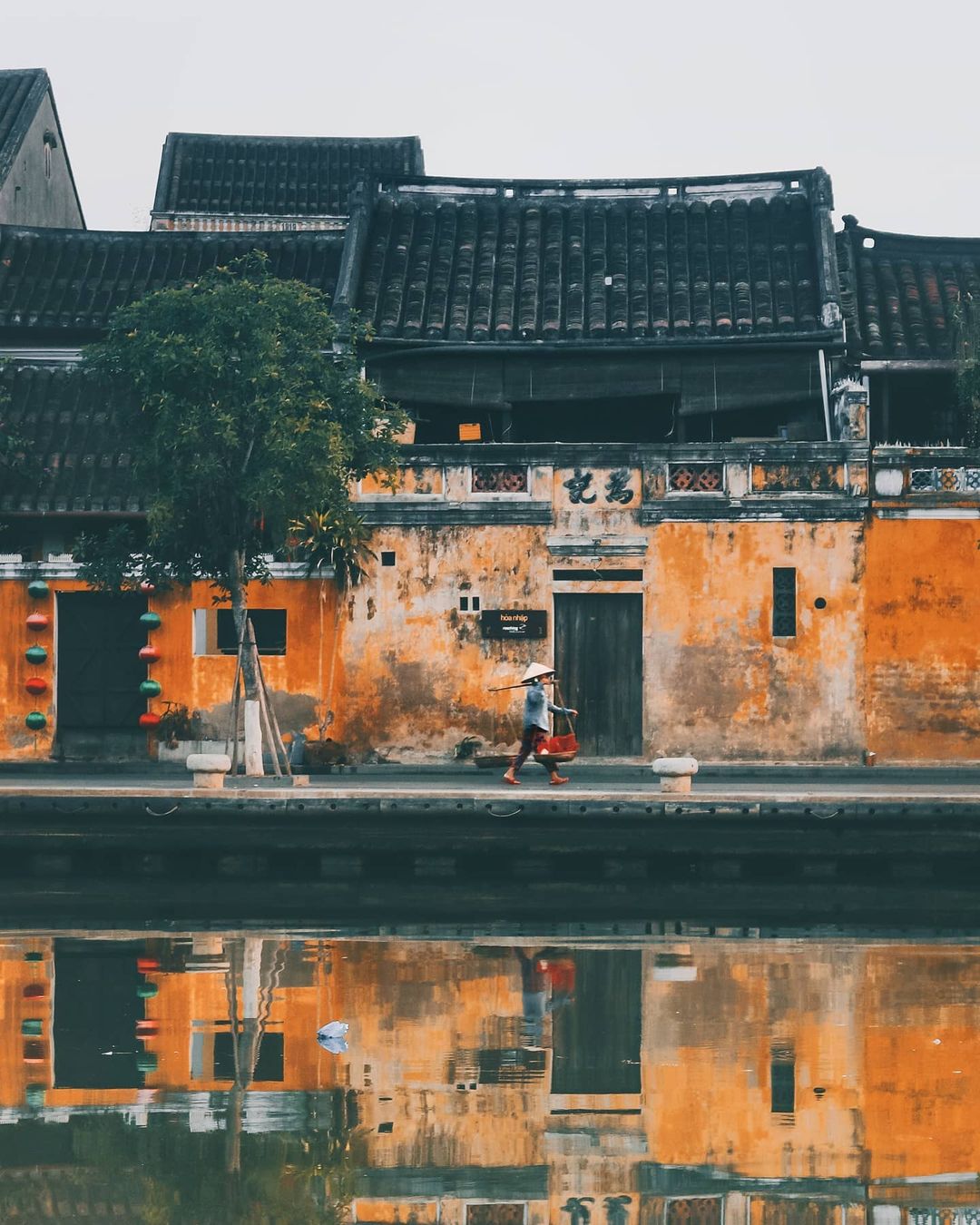 Hoi An's Irresistible Charm - Photo: Instagram @soaipham
Hoi An's Irresistible Charm - Photo: Instagram @soaipham
Always ranking highly on the list of Vietnam's most attractive destinations, Hoi An captures the hearts of travelers with its nostalgic beauty, characterized by red-tiled roofs, iconic yellow walls, dreamy rivers, and stunning, tranquil beaches.
Those who have visited the city often find it difficult to leave and almost impossible to forget.
Weather and Best Time to Visit
With the humid tropical climate of the southern Hai Van region, Hoi An experiences two distinct seasons: dry and rainy.
The rainy season lasts from September to the end of January. Unlike North Vietnam (e.g., Hanoi, Halong Bay, and Sapa), which experiences cool winter breezes, Hoi An sees average temperatures in the low to mid-20s Celsius during this period.
The dry season from February to August features little rainfall and warmer temperatures. However, due to its proximity to the ocean, Hoi An's heat is often tempered, making the climate more pleasant compared to other areas of Vietnam.
In recent years, Hoi An's Old Quarter has experienced increased flooding during the rainy season, so visitors are advised to plan their trips for the dry season.
Overall, the best time to explore Hoi An is between February and July, when the spring and early summer bring mild weather and endless blue skies.
Learn more about Hoi An's weather.
What to Do in Hoi An
Visit Well-Known Attractions
As one of the top places to visit in Vietnam, Hoi An retains nearly 1,000 architectural features, including streets, houses, assembly halls, communal houses, temples, shrines, and bridges. A must-do activity is exploring the city’s renowned sites, such as the Japanese Covered Bridge, Tan Ky Old House, Phung Hung Old House, and the Cantonese Assembly Hall. A tourist map can guide you as you explore the city on foot.
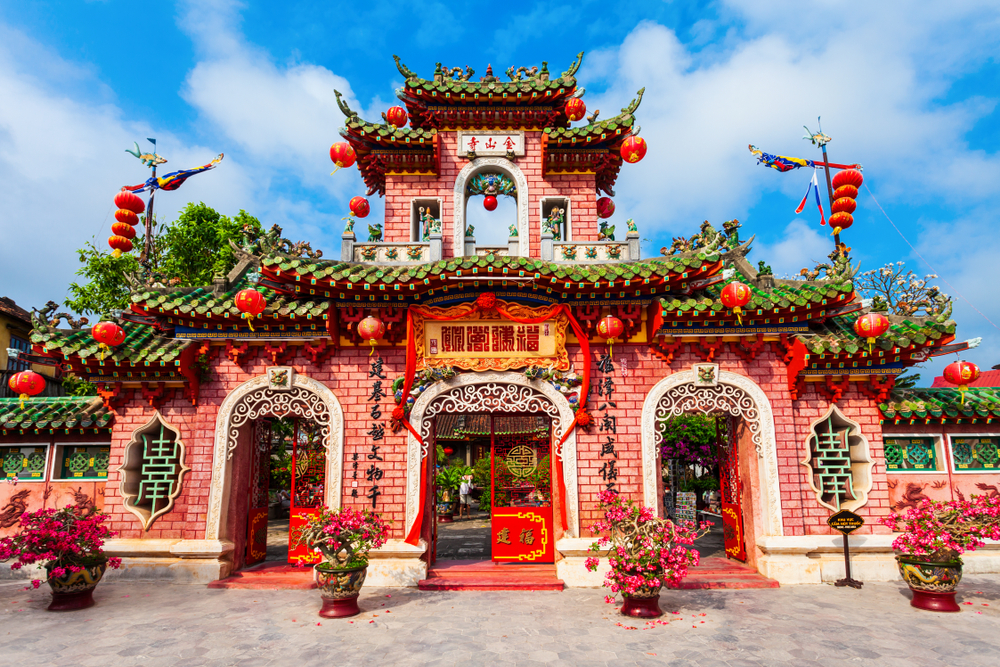 Hoi An Fujian Assembly Hall - An iconic landmark
Hoi An Fujian Assembly Hall - An iconic landmark
If time allows, consider trips to nearby attractions such as My Son Sanctuary, Tra Que Vegetable Village, Kim Bong Carpentry Village, Cam Thanh Coconut Village, or Cham Island. Booking a tour with a local agency can help you make the most of your visit.
Relax on the Beaches
In addition to the ancient beauty of the old town with its red-tile-roofed houses, brilliantly colored yellow facades, and vibrant lanterns, Hoi An boasts the stunning An Bang Beach. The natural scenery, featuring stretches of white sand, emerald seas, and traditional wooden boats, along with a refreshing ocean breeze, offers a restful escape from the fast pace of daily life.
Take a Bicycle Tour
Hoi An is recognized as one of the most beautiful cycling destinations, alongside cities like Florence (Italy), Paris (France), and Amsterdam (Netherlands). Therefore, cycling is a unique way to explore the serene and charming landscapes of Hoi An while supporting eco-friendly tourism.
To protect Hoi An’s fresh and clean environment, the local government promotes bicycle use for tourists. Renting a bike is quite affordable, with prices starting from 30,000 - 60,000 VND (approximately 1.30 - 2.60 USD), and many hotels offer complimentary bike rentals.
Shop at the Central Market
During your stay, make sure to explore Hoi An Market, the largest market in the area, which is bustling with consumer goods and essential food items. The market also showcases a variety of local specialties and handicrafts like lanterns and “non la” (conical hats), providing a plethora of options for souvenirs.
In addition to uniquely crafted handicrafts, Hoi An Market is famous for its street food, which is recommended by various travel guides, including Lonely Planet. Don’t miss trying local delicacies such as cao lau, my quang, and com ga Hoi An.
Order Your Bespoke Clothes
A must-do in Hoi An is to order a beautifully tailored outfit from skilled local tailors. Renowned for its luxurious silk, Hoi An offers personalized tailoring services that enable you to create a unique outfit or a memorable gift for loved ones.
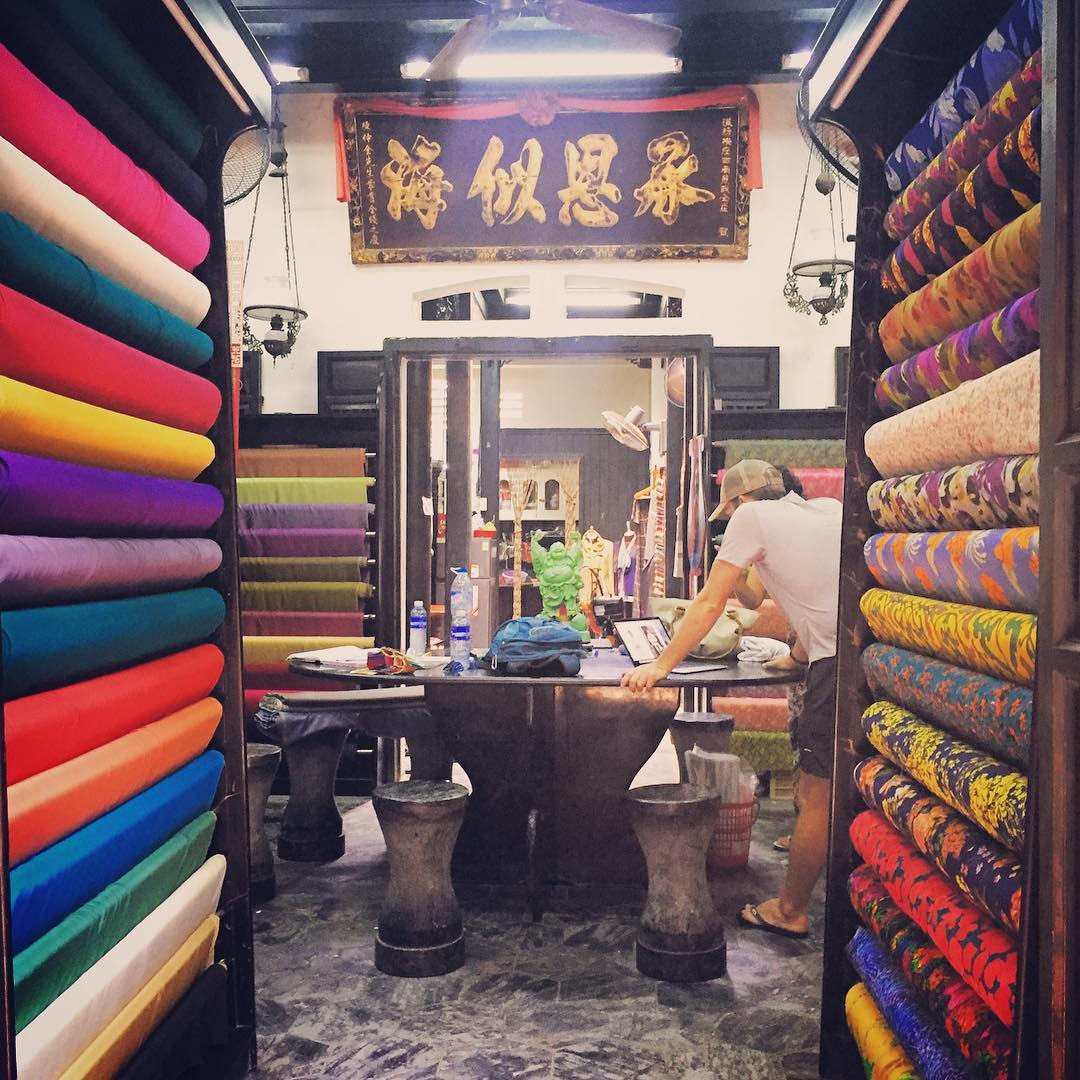 B'Lan Silk - Photo: @hello_and_thank_you
B'Lan Silk - Photo: @hello_and_thank_you
Numerous tailor shops are scattered along the old streets, with many skilled tailors in each establishment, giving you an excellent range of options for your custom clothing.
Learn more about the best tailor shops in Hoi An.
Places to Visit in Hoi An
Japanese Covered Bridge
The 400-year-old Japanese Covered Bridge is a jewel in the heart of Hoi An, symbolizing the connection between the past, present, and future. Situated over a small arm of the picturesque Thu Bon River and surrounded by the Old Quarter, it stands as a testament to the town's rich history. This bridge is a perfect spot to appreciate ancient architectural beauty and the evocative history of Hoi An.
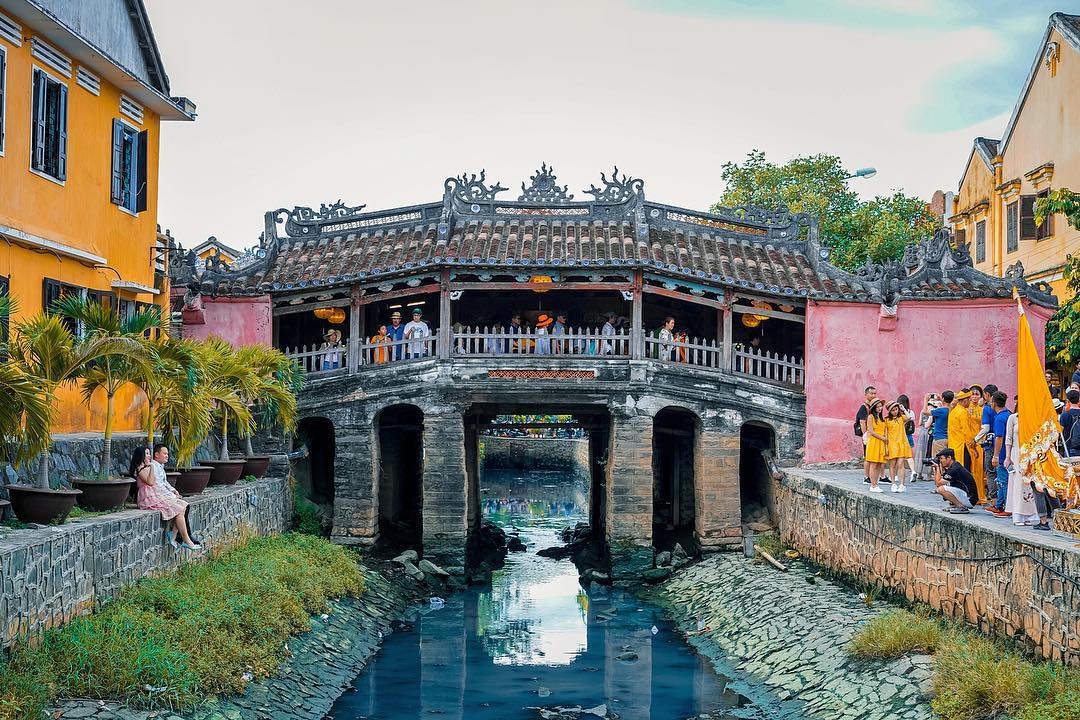 Japanese Covered Bridge in Hoi An - Photo: Instagram @okazakitomoya
Japanese Covered Bridge in Hoi An - Photo: Instagram @okazakitomoya
Tan Ky Old House
Constructed nearly 200 years ago, Tan Ky Old House was recognized as a national cultural and historical relic site in 1990. It exemplifies traditional Hoi An architecture, featuring multiple rooms dedicated to various functions. The front of the house served as a storefront, while the back connects to the river wharf for trading purposes.
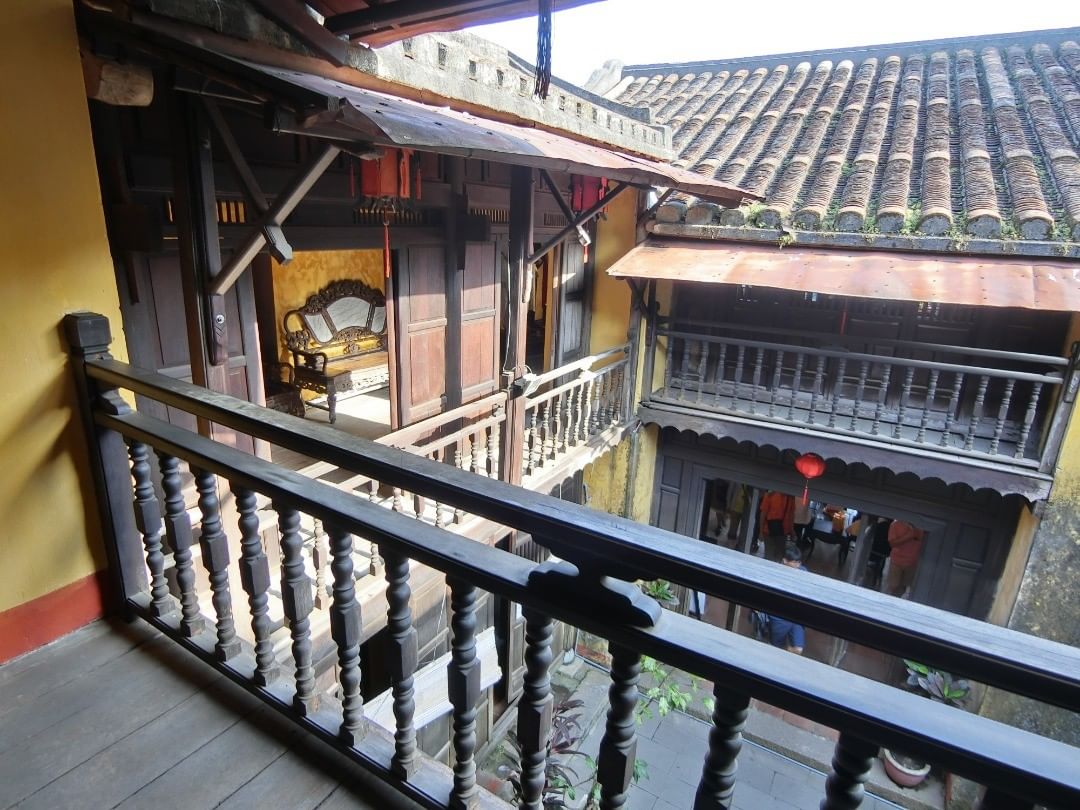 Tan Ky Old House - Photo: Instagram @me____encanta_viajar
Tan Ky Old House - Photo: Instagram @me____encanta_viajar
Visitors are impressed by its elegant design and high-quality construction, highlighting the skills of local artisans.
Phung Hung Old House
Dating back over 100 years, Phung Hung Old House once belonged to one of Hoi An's wealthiest merchants. Its structure features a blend of modern and traditional styles, reflecting the historic prosperity of the town.
Cantonese Assembly Hall
The Cantonese Assembly Hall, built in 1885, is one of Hoi An's most iconic structures. Characterized by its intricate wooden, stone, and cement architecture, it showcases exquisite details of traditional Chinese design while housing beautiful ceramic artifacts.
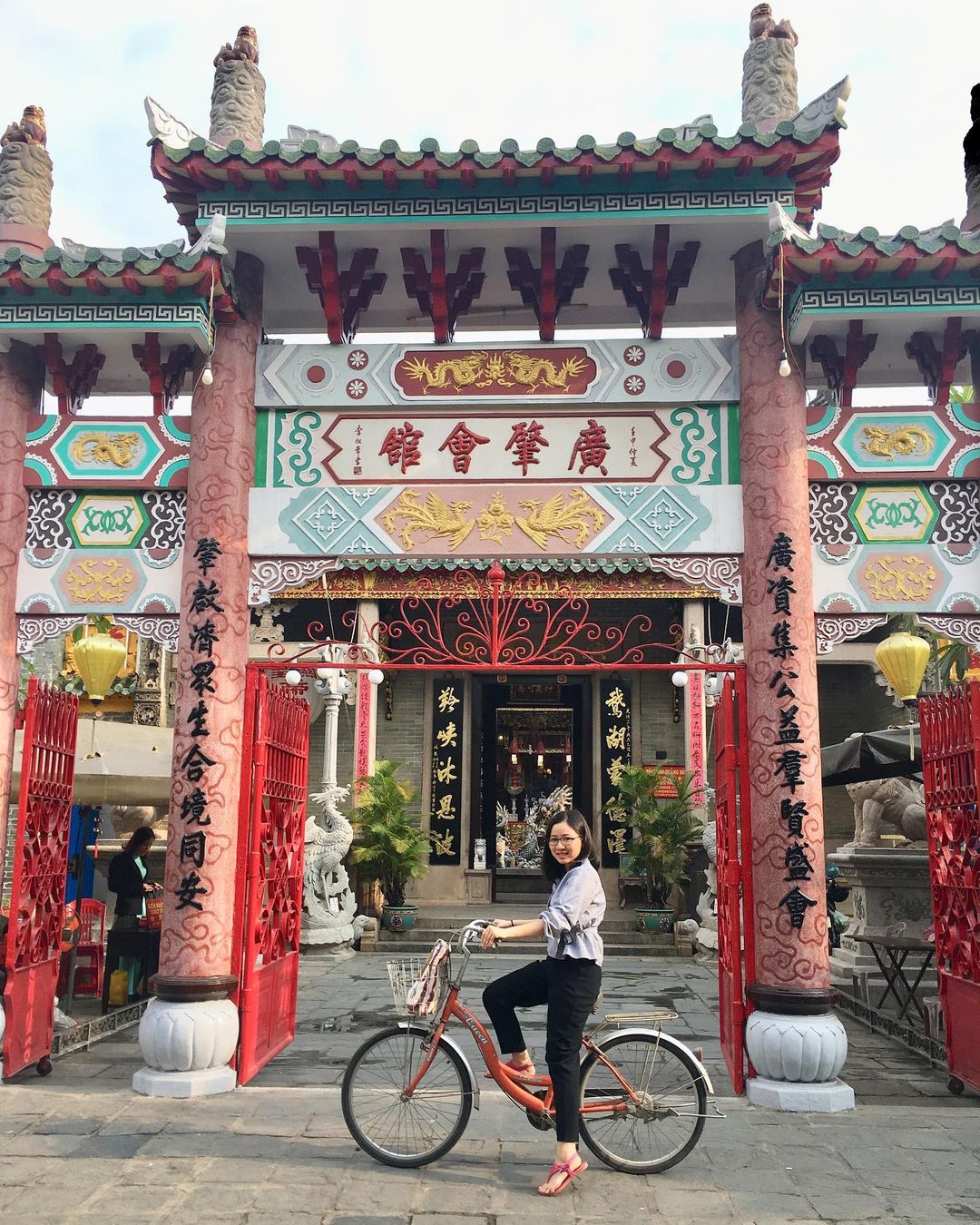 Cantonese Assembly Hall - Photo by iamhoaf24
Cantonese Assembly Hall - Photo by iamhoaf24
Trieu Chau Assembly Hall
The Trieu Chau Assembly Hall is renowned for its intricate details and delicate carvings, making it a must-see for those interested in Vietnamese history and the evolution of Hoi An.
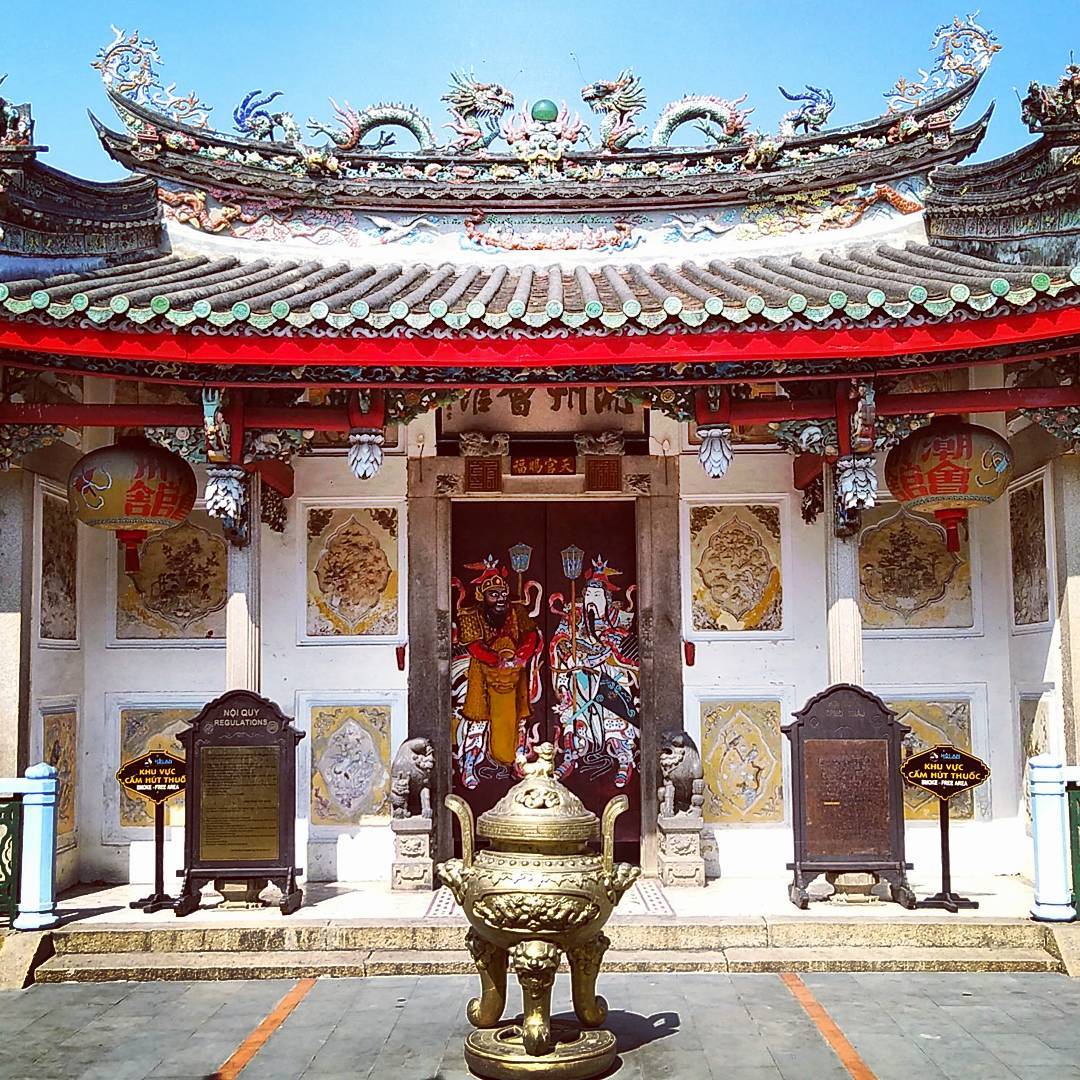 Trieu Chau Assembly Hall - Photo: Instagram @r_phar
Trieu Chau Assembly Hall - Photo: Instagram @r_phar
Beyond the Old Quarter
Cua Dai Beach
Located about 5 kilometers from the center of Hoi An, Cua Dai Beach has been recognized as one of Asia's most beautiful beaches, amenable to serene walks along its soft sand and turquoise waters. However, due to coastal erosion, swimming is not currently recommended here, even though the views, especially at sunset, remain breathtaking. If you're looking to swim, An Bang Beach nearby offers a better alternative.
An Bang Beach
An Bang Beach is a must-visit attraction during your Hoi An trip, known for its pristine white sands, calm azure waters, and swaying palm trees. The beach offers a relaxing retreat where visitors can immerse themselves in tranquility, leaving behind the stress of daily life.
Thanh Ha Pottery Village
Situated by the serene Thu Bon River, Thanh Ha Pottery Village has over 500 years of history, showcasing the talents of local artisans who craft beautiful pottery.
Visitors can enjoy the rustic charm of the village while selecting meaningful souvenirs or even making their own pottery. Don't miss the Thanh Ha Terracotta Park, recognized as Vietnam’s largest ceramic park, featuring markets, exhibitions, and displays of unique ceramic products.
Tra Que Vegetable Village
If you appreciate the peace and fresh beauty of nature, Tra Que Vegetable Village is a fantastic destination. The village is vibrant with over 70 vegetable varieties and offers opportunities to engage in local farming practices, including harvesting and cultivating vegetables. You can walk around or ride a bicycle between the fragrant vegetable fields, enhancing your overall experience.
My Son Sanctuary
Located more than 40 kilometers from Hoi An, My Son Sanctuary is recognized by UNESCO as a World Cultural Heritage site, showcasing unique Champa architecture within a beautiful valley. The sanctuary comprises over 70 temples, each reflecting various styles from the Champa Kingdom. Visitors can also experience Cham culture through traditional performances. Admission costs approximately 150,000 VND for foreign visitors and 100,000 VND for Vietnamese visitors.
What to Eat in Hoi An
Beyond ancient streets and enchanting lantern lights, Hoi An dazzles visitors with its diverse and unique culinary landscape.
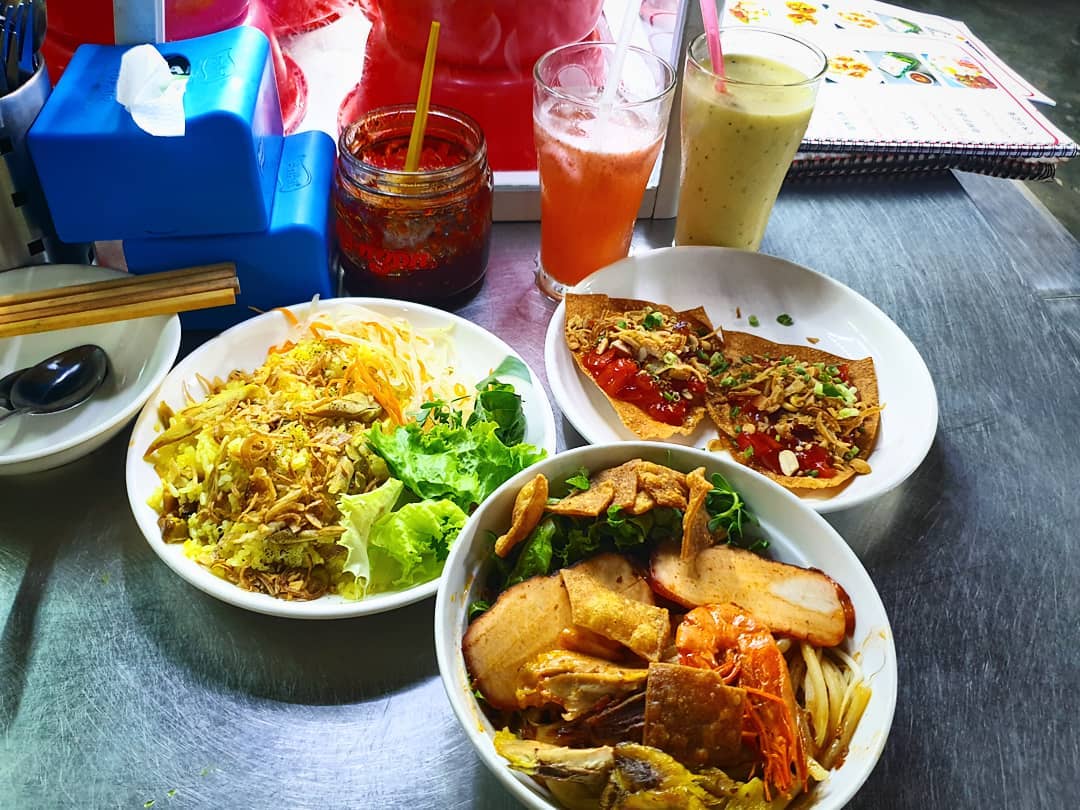 Hoi An's Delicacies In A Nutshell - Photo: Instagram @jinxtjx
Hoi An's Delicacies In A Nutshell - Photo: Instagram @jinxtjx
Cao Lau – A Pork Noodle Dish
Visitors to Hoi An must try the local specialty “Cao lau,” which stands out from other noodle dishes due to its distinctive preparation. This dish includes rich broth, chewy noodles, and toppings such as minced meat, fresh vegetables, and a hint of tang from lime and chili. Although it has origins in China, it has long been accepted as a culinary icon of Hoi An.
Some of the best places to enjoy Cao lau in the old town include:
- Cao Lau Lien Restaurant: No. 21, Thai Phien Street, Minh An Ward, Hoi An
- Cao Lau Ba Be Restaurant: No. 19, Tran Phu Street, Cam Chau Ward, Hoi An
- Cao Lau Thanh Restaurant: No. 26, Thai Phien Street, Minh An Ward, Hoi An
Banh Mi – Bread
Banh mi is a renowned street food across Vietnam, with each region putting a unique spin on the dish. In Hoi An, visitors can’t miss the famous establishments, Phuong Bread and Madame Khanh. Anthony Bourdain praised Hoi An's bread as “a symphony in a sandwich.”
Addresses:
- Phuong Bread: No. 2B, Phan Chu Trinh Street, Cam Chau Ward, Hoi An
- Madame Khanh Bread: No. 115, Tran Cao Van Street, Minh An Ward, Hoi An
Chicken Rice
Don't leave Hoi An without trying the locally made chicken rice, featuring sticky rice paired with tender chicken, onions, papaya, and herbs, served with a side of chicken heart soup. It’s a unique and flavorful dish you should definitely sample.
Some of the best places to enjoy chicken rice in Hoi An are:
- Ba Buoi Restaurant: No. 22, Phan Chu Trinh Street, Minh An Ward, Hoi An
- Ba Ty Restaurant: No. 25-27, Phan Chu Trinh Street, Minh An Ward, Hoi An
- Ba Nga Restaurant: No. 8, Phan Chu Trinh Street, Minh An Ward, Hoi An
Hoi An Sweet Soup
Hoi An is like a sweet soup haven, with an array of flavors including corn sweet soup, lotus sweet soup, black bean sweet soup, sesame sweet soup, and rice ball sweet soup. A mixed sweet soup cup is an excellent choice to sample multiple flavors in one.
For some of the best sweet soup in Hoi An, visit:
- Ba Muoi’s Sweet Soup: No. 4, Hoang Dieu Street, Cam Nam Ward, Hoi An
- Co Sau’s Sweet Soup: No. 369, Cua Dai Street, Cam Chau Ward, Hoi An
- Co Suong’s Sweet Soup: No. 57, Tran Cao Van Street, Cam Pho Ward, Hoi An
What to Buy as Gifts
Green Bean Cake
Though originating from Hai Duong Province, Hoi An’s green bean cake is distinctive for its sweet-salty flavor, enriched by crispy fried pork fat and soft green bean crust. Its special taste and attractive packaging make it an ideal gift for friends and family after your visit.
Toy Figurines
Toy figurines, crafted from Thanh Ha pottery, make for memorable souvenirs. With varied designs such as zodiac signs and animals, they encapsulate the essence of Hoi An's culture and are perfect gifts.
Silk
Silk is another specialty from Hoi An, renowned for its quality and historical significance. Products made from silk crafted by local artisans make for classy and memorable gifts.
Lanterns are synonymous with Hoi An, and they make for remarkable gifts, serving as elegant decorations to remind loved ones of this enchanting town.
How to Get Around in Hoi An
Motorbike
Renting a motorbike is a popular option in Vietnam as it allows for flexibility and cost savings. Rental prices in Hoi An typically range from 120,000 - 150,000 VND per day.
Bicycles
Bicycles are a recommended way to travel in Hoi An, allowing you to enjoy and absorb the town’s ancient beauty in a sustainable manner. Daily rental costs average around 60,000 VND. Free bicycles may also be available at your accommodation.
Cyclo
While rare in many cities, cyclos are a common means of transport in Hoi An. Rates start at approximately 150,000 VND per hour.
Taxi
For attractions farther from the city center, taxis are the most convenient choice. Recommended taxi companies include Mai Linh Taxi (phone number: 0235 3 92 92 92), Hoi An Taxi (phone number: 0235 3 91 99 19), and Faifo Taxi (phone number: 0235 3 91 91 91).
Boat
To fully enjoy Hoi An's beauty, consider taking a boat ride on Hoai River or the Thu Bon River. Boat rentals are readily available from the city center’s riverfront.
Where to Stay in Hoi An
Hotels in Hoi An
Travelers often prefer to stay in the Old Quarter or by the beach. Some recommended hotels include La Residencia Hotel, Little Riverside Hoi An Hotel, and Maison Vy Hotel.
Homestays in Hoi An
For a more authentic experience, consider staying at a homestay, such as Loongboong Homestay or An Bang Garden Homestay, where you can immerse yourself in Hoi An's local charm.
Resorts in Hoi An
If you prefer a luxurious stay, consider some of the stunning resorts in Hoi An, including Victoria Hoi An Beach Resort & Spa, The Palm Garden Beach Hoi An, and Sunrise Premium Resort Hoi An.
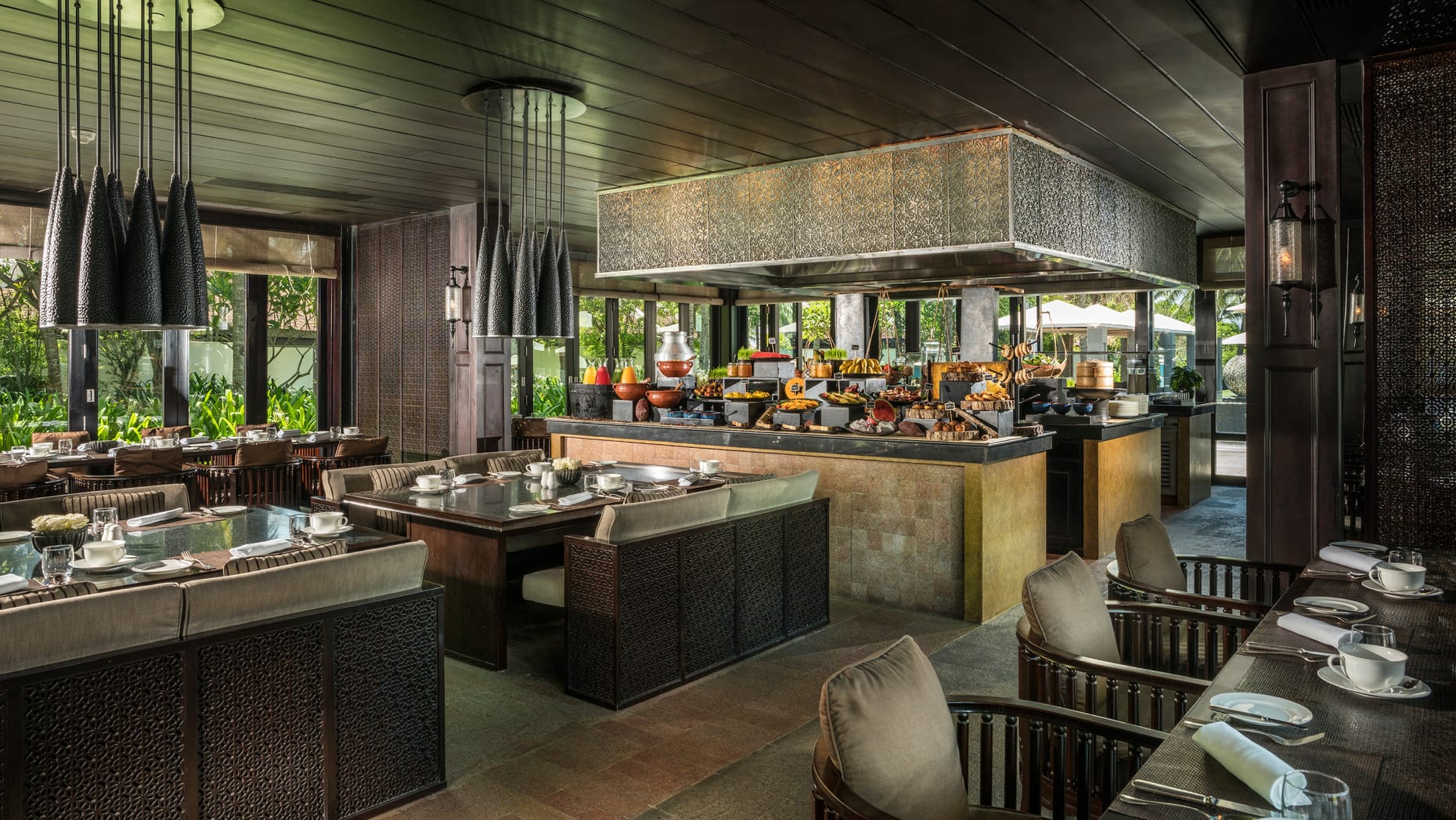 The Ultra-luxury Four Seasons The Nam Hai Resort
The Ultra-luxury Four Seasons The Nam Hai Resort
| °C | ||
| Humidity | % | |
| Wind | km/h | |
| Sunrise | ||
Hoi An Travel Guide
Seasonal Guides
Best Of Hoi An
See, Eat, Sleep, Shop, Stay - The Best of Hoi An
Frequently asked questions
How close is the beach from downtown Hoi An?
You can visit An Bang Beach and Cua Dai Beach from Hoi An's downtown area. An Bang Beach is approximately 5 km away, while Cua Dai Beach is about 7 km from town. Getting to the beaches is convenient; you can take a taxi, rent a motorbike, or even ride a bicycle for a pleasant journey.
Can you give some quick recommendations on place to eat?
In addition to its beautiful ancient streets, pagodas, and historic houses, Hoi An is renowned for its delicious and affordable food scene.
You'll discover a variety of unique dishes, including Cao Lầu (rice noodles with barbecued pork, greens, and croutons), Bánh vạc (white rose dumplings), Cơm gà Hội An (chicken rice), Mì Quảng (Vietnamese turmeric noodles), Bánh mì Hội An (Vietnamese baguette), and Bánh đập (rice crackers).
Here are some popular restaurants to try these delightful dishes:
- Cơm Gà Bà Buội - 22 Phan Chu Trinh
- Bánh Mì Phượng - 2b Phan Chu Trinh, Cam Châu
- Aubergine 49 Restaurant - 49A Ly Thai To Street
- Ancient Faifo - 66 Nguyen Thai Hoc Street
- Orivy Hoi An - 578/1 Cua Dai Street
- Morning Glory Restaurant - 106 Nguyen Thai Hoc Street
What are the main attractions of Hoi An?
In addition to the historic town with its charming old houses and lantern-adorned streets, Hoi An offers a variety of attractions to explore. Here are some key sites you shouldn’t miss:
- Hoi An Ancient Town
- Tan Ky House
- Cham Islands
- Japanese Covered Bridge
- My Son Sanctuary
- An Bang Beach or Cua Dai Beach
Discover the complete list of attractions in Hoi An.
How to get from Danang Airport to Hoi An?
The distance from Danang Airport to Hoi An is approximately 30 km. You can choose from several transportation options: a public bus, a taxi, or a private car. The public bus departs from the Danang city center bus station and stops at Hoi An's bus station, which is about a 20-minute walk or a 10-minute drive to the ancient town. This is the most economical choice if you're okay with a few stops. Alternatively, a taxi or private car offers a direct and comfortable ride to Hoi An's ancient town.
When is the best time to visit Hoi An?
Hoi An enjoys a tropical climate, making the temperature pleasant throughout the year. However, the rainy season, which lasts from September to January, can impact your travel plans. The ideal time to visit Hoi An is from February to July, when the weather is dry and sunny, perfect for exploring the ancient town and its nearby attractions.


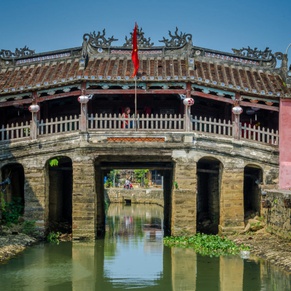 Japanese Bridge
Japanese Bridge
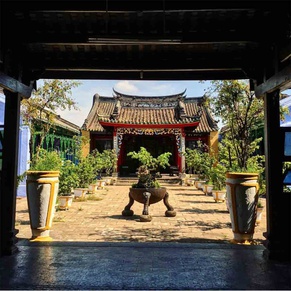 The Tran Family Chapel
The Tran Family Chapel
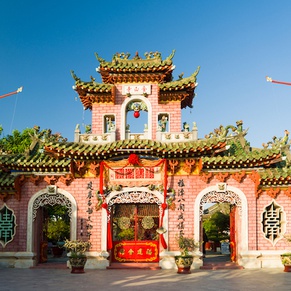 Fujian Assembly Hall
Fujian Assembly Hall
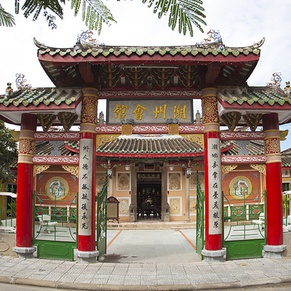 Assembly Halls in Hoi An
Assembly Halls in Hoi An
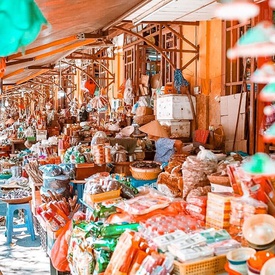

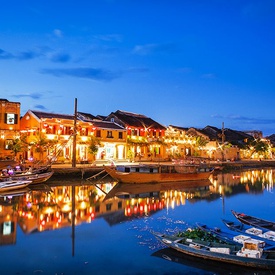

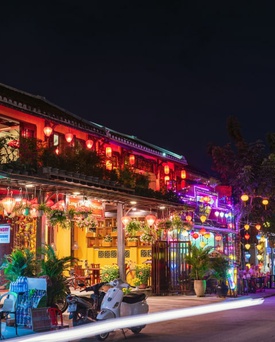 Hoi An in January
Hoi An in January
 Hoi An in February
Hoi An in February
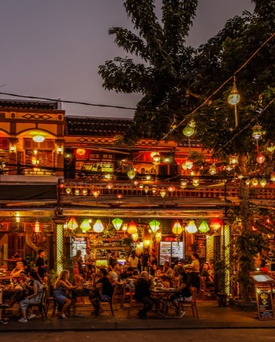 Hoi An in March
Hoi An in March
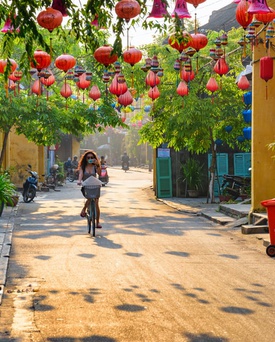 Hoi An in April
Hoi An in April
 Hoi An in May
Hoi An in May
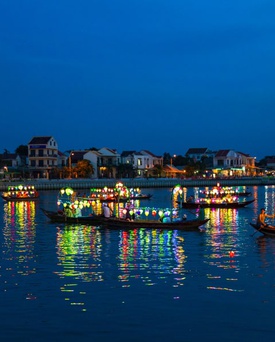 Hoi An in June
Hoi An in June
 Hoi An in July
Hoi An in July
 Hoi An in August
Hoi An in August
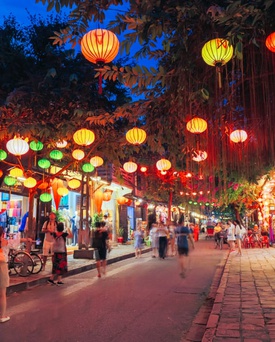 Hoi An in September
Hoi An in September
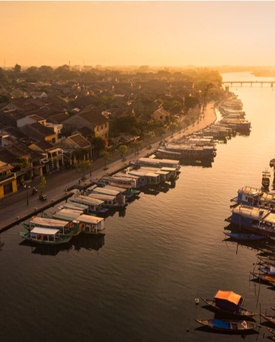 Hoi An in October
Hoi An in October
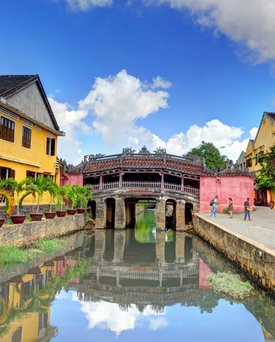 Hoi An in November
Hoi An in November
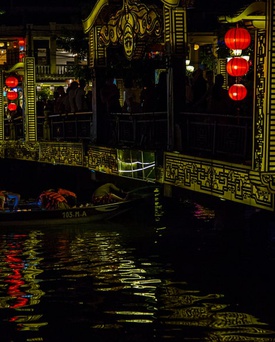 Hoi An in December
Hoi An in December
